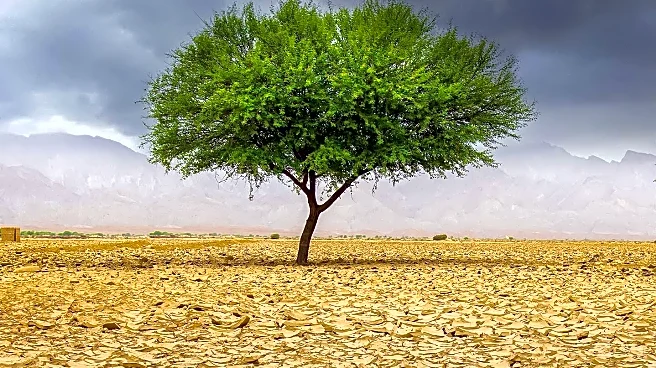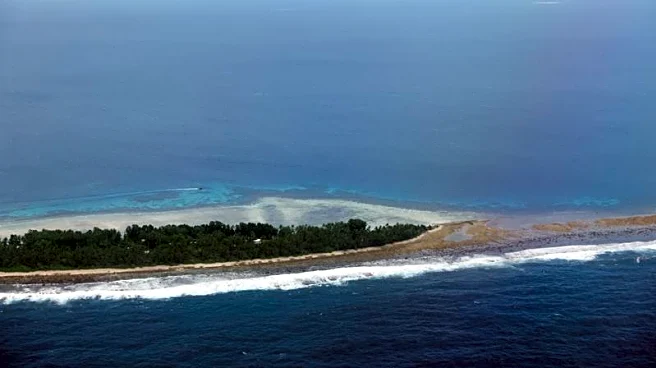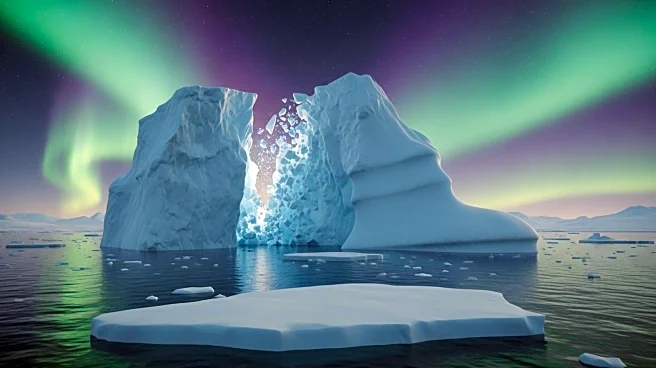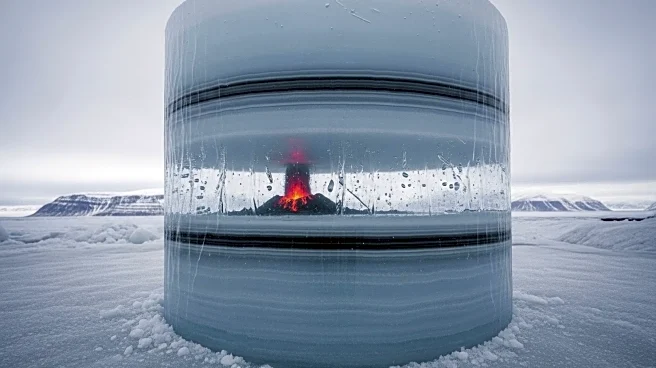What's Happening?
Scientists have documented an unprecedented subglacial flood in Greenland, releasing 23 billion gallons of water. This event, detailed in the journal Nature Geoscience, marks the first observation of such a phenomenon, challenging existing models of ice sheet dynamics. The flood created a 278-feet-deep crater over a 0.7-square-mile area, highlighting the power of meltwater trapped beneath the ice sheet. Researchers are astonished by the force exerted by this hidden water and its implications for understanding ice sheet dynamics. The discovery opens new avenues for inquiry into the behavior and impact of subglacial lakes on the ice sheet system.
Why It's Important?
The subglacial flood in Greenland underscores the significant impact of climate change on Earth's ice sheets. As global warming continues to threaten polar ice, these findings highlight the importance of monitoring subglacial processes. The event challenges existing models and emphasizes the need for further research into ice sheet dynamics and climate change adaptation. The data gathered from this event is expected to provide valuable insights into the immediate and long-term effects of subglacial lake drainage on ice sheet stability and dynamics, contributing to the global discourse on climate change.
What's Next?
Scientists are now focused on understanding the frequency of subglacial lake drainage and its effects on the ice sheet. Enhanced satellite technology and data analysis are expected to play a pivotal role in uncovering more about these hidden processes beneath the ice. The insights gained from this event emphasize the need for continued exploration of subglacial environments, potentially reshaping our understanding of climate dynamics and global sea-level rise.
Beyond the Headlines
The revelation of a subglacial flood in Greenland raises crucial questions about the future of ice sheet research and climate change adaptation. As science continues to uncover the mysteries of our planet, these questions will guide future research and policy-making efforts.












